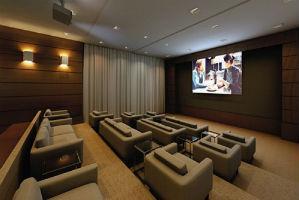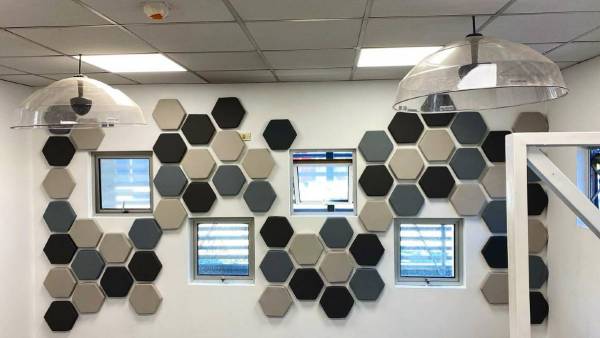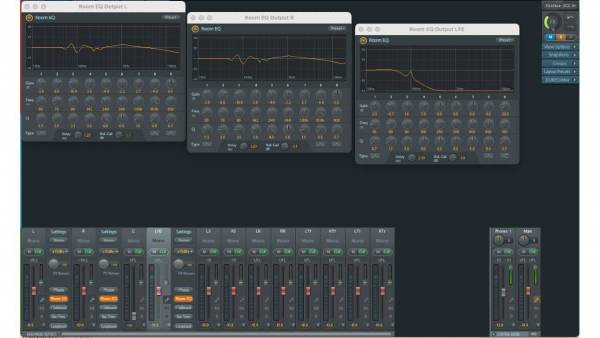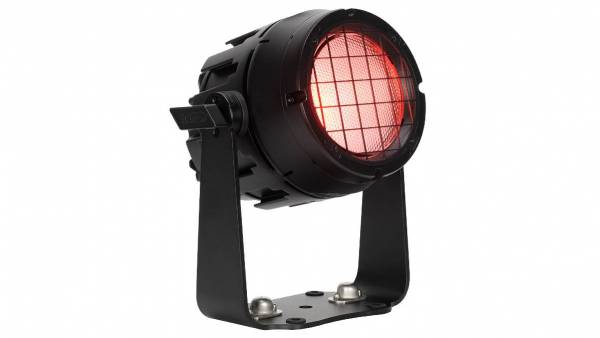
By Richard Santa S.
With the first broadcast of the cinematograph, that invention of the Lumiere brothers officially presented for the first time in December 1895, projection screens became a reason for meeting for people.
Technological developments, such as the emergence of televisions, allowed that years later people did not have to travel to a theater to watch movies, but could do it from home, although the size of the image and the quality of the sound were not the same.
Today these conditions have greatly improved and it is increasingly common that in homes, especially of wealthy families, there is a room dedicated exclusively to a home theater, and not just a TV in the room or in the living room as before.
When making an installation of this type, one of the first conditions of customers to designers and installers, is that the screen and the sound system are of the latest technology. And although these are important aspects, they do not guarantee the quality of the final result of home theaters.
This was explained by Anthony Grimani, founder and president of PMI, an engineering company specialized in the installation of home theaters in countries in America and Europe.
He added that sound engineers should consider other aspects that are very important and that are not normally on their list of tasks, such as the design of spaces, including materials, location of objects and real estate, among others.
Teamwork
One of the first recommendations that Antoni Grimani makes in each of the courses he teaches throughout America with the Cedia University, is that the sound engineer should participate more actively in the design of the theater at home.
When someone wants to reform a room to turn it into a movie theater, the first thing they hire is a designer looking to create aesthetically well-presented spaces, which do not always end up being favorable for the quality of the sound and for the comfort of the people who will use it.
Grimani argued that a home cinema should be the result of joint work between the interior designer and the installer, seeking harmony and the best quality for the management of the two.
He added that the installer should know how to reach out and talk to the designer to explain why sometimes his idea of space is not the best for the final result of sound and video. In addition, you must know how to negotiate with him to reach agreements that allow higher quality of spaces.
The installer must also know what is the idea that the client has for the new space in his home, what are his dreams and his tastes, so that with the cimena at home he can identify himself and be satisfied.
Real estate
Capacity for how many people? What kind of seats and what size? What is the shape of the room? Is it an enclosed or open enclosure? What are the colors they want? These are some of the questions that from the beginning should be clear for a home theater.
Although there is no perfect sound, there are several conditions that must be taken into account to make it the best possible. The first thing is the shape of the room. Ideally, it should be rectangular so that the reflections of the sound are distributed throughout the room, with a width-to-length ratio of 1:2 or 1:3.
The number of chairs, their size, style and location are fundamental, because they can become an obstacle to sound. "Customers prefer a couch over traditional movie theater chairs, but they don't take into account that not having the right chair becomes a distraction," said Anthony Grimani.
He stressed that the chairs should be comfortable enough but not too comfortable so that they do not cause sleep over long periods. "They should be like a chair from the Mercedes car brand, a bit hard but comfortable."
These should occupy the smallest possible surface, seeking to increase the total capacity of the room and space for side tables. The height of the back should be below the ear, maximum up to the nape of the neck.
In addition, the chairs should be located in such a way that people do not have to raise their eyes at an angle greater than 15 degrees to avoid fatigue, and they should not be attached to the wall, to avoid a bass that affects the sound in general.
Finally, installers should take into account:
*Hide the equipment. It is not required to see the speakers or projectors, they can be covered with fabrics or plasters that do not affect the acoustics of the enclosure.
*Ask the client about their dreams. Knowing these aspects allows the installer to have design ideas according to the tastes of the client.
*Make the room an event. Make it a special place so that when the owners of the house or their guests enter they feel surprised.
*Communication with the designer. Remember that it is not your enemy, it is a complement to your work that you must take into account and know how to negotiate between aesthetics and technical requirements.
Isolation
The doors and windows are the "weak link" of the construction of the theater at home, because it depends on them that the light and external sound does not enter the theater, nor that the one inside leaves.
"This is one of the high-cost materials for these rooms, because they must have a special construction, they must be heavy, with good seals and with internal cushioning. In the North American market you get doors from US $ 2,500, but they are not good. A good quality one costs about $4,000."
But not only doors and windows should be insulated. Floors and walls also require insulation so that the sound of projections does not disturb neighboring rooms or floors.
Keep in mind that to isolate the sound does not require mass but to muffle it. When the theater is being built in a new building, from the design you can contemplate the walls with special materials.
But the challenge is greater when talking about an adaptation in an old construction. The most used materials to insulate the walls are: foam, drywall, rubber, wood and fiberglass. Thick concrete is not recommended because it is expensive and heavy.
For floors, Grimani recommends putting on top of the concrete floating rubber and foam floors, and then decorating with tiles or wood as intended in the design.
Transient noise produced by local sources from home theaters such as fans, pipes, air conditioners, must also be controlled with lined ducts, whistle-proof air grilles, long ducts with various turns, and air chamber silencers.
The color of the room and its accessories also influences, because it can be reflected on the screen affecting the quality of the image. The most advisable are dark or neutral colors, especially in the surroundings of the screen to avoid reflection.
Market
Although the installation of theaters at home is very common among people with greater purchasing power and in industrialized countries such as the United States and Europe, in Latin America they have also begun to settle. In the region, Brazil, Argentina and Mexico is where this type of rooms have had the most reception.
The President of PMI, indicated that the technologies applied in home theaters are not new or developed only for them, they are materials and techniques that the industry in general uses to isolate the rooms of machines that make a lot of noise.


























Leave your comment